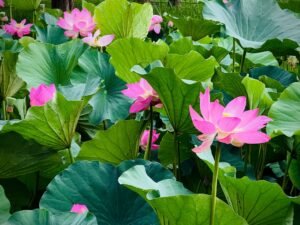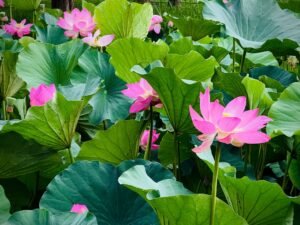

Discovering Norway: Essential Phrases for Your Next Adventure
Norway is a country known for its stunning natural landscapes, rich history, and unique culture. As you plan your next adventure to this Scandinavian gem, it’s important to consider the language spoken by the locals – Norwegian. While many Norwegians speak English fluently, learning some basic Norwegian phrases can greatly enhance your experience and show respect for the local culture. In this article, we will explore the benefits of learning Norwegian phrases and provide you with essential vocabulary for various situations you may encounter during your trip.
Table of Contents
ToggleBasic Greetings and Expressions: How to Say Hello, Goodbye, and Thank You in Norwegian
When visiting a foreign country, it’s always polite to learn some basic greetings and expressions. In Norway, the most common way to say hello is “Hei” (pronounced like “hi”). If you want to be more formal, you can say “God dag” (pronounced like “good dog”), which means “Good day”. To say goodbye, you can use “Ha det” (pronounced like “ha debt”), which is a casual way of saying “Take care”. For a more formal goodbye, you can say “Farvel” (pronounced like “far-vel”).
Saying thank you is an important part of any culture, and in Norwegian, you can express your gratitude by saying “Takk” (pronounced like “tahk”). If you want to be more polite, you can say “Tusen takk” (pronounced like “too-sen tahk”), which means “Thank you very much”. It’s always appreciated when visitors make an effort to learn these basic greetings and expressions, as it shows respect for the local language and culture.
Ordering Food and Drinks: Common Phrases for Dining Out in Norway
Norway is known for its delicious cuisine, and dining out is a must-do experience during your trip. To make the most of your dining experience, it’s helpful to learn some common phrases for ordering food and drinks. When you’re ready to order, you can say “Jeg vil gjerne ha” (pronounced like “yay vil yernuh ha”), which means “I would like to have”. You can then follow it with the name of the dish or drink you want to order.
If you have any dietary restrictions or allergies, it’s important to communicate them to the waiter. You can say “Jeg har allergi mot” (pronounced like “yay har al-er-gee mot”), which means “I have an allergy to”. Fill in the blank with the specific ingredient you are allergic to. For example, if you are allergic to nuts, you can say “Jeg har allergi mot nøtter” (pronounced like “yay har al-er-gee mot noh-ter”).
When you’re finished with your meal and ready to pay, you can ask for the bill by saying “Kan jeg få regningen?” (pronounced like “kan yay foh reh-ning-en”). This phrase will let the waiter know that you would like to receive the bill. It’s always a good idea to have cash on hand, as some smaller establishments may not accept credit cards.
Getting Around: Essential Phrases for Transportation in Norway
Norway is a country with excellent public transportation options, making it easy to explore different cities and regions. Whether you’re taking a bus, train, or ferry, it’s helpful to learn some essential phrases for getting around. To ask if a bus or train is going to a specific destination, you can say “Går denne bussen/toget til…” (pronounced like “gor den-neh buss-en/toh-get til”), which means “Is this bus/train going to…”. Fill in the blank with the name of your desired destination.
If you need to ask for directions, you can say “Unnskyld, hvor er…” (pronounced like “oon-skuld, vor er”), which means “Excuse me, where is…”. Fill in the blank with the name of the place or landmark you are looking for. The locals are generally friendly and helpful, so don’t hesitate to ask for assistance if you’re unsure about something.
Asking for Directions: How to Navigate Your Way Through Norway
Exploring a new country can be exciting, but it can also be challenging if you’re not familiar with the local language. In Norway, it’s helpful to learn some vocabulary for asking for directions. To ask how to get to a specific place, you can say “Hvordan kommer jeg til…” (pronounced like “vor-dan kom-mer yay til”), which means “How do I get to…”. Fill in the blank with the name of your desired destination.
When someone gives you directions, it’s important to understand and follow them. If someone says “Gå rett fram” (pronounced like “gor ret fram”), it means “Go straight ahead”. If they say “Ta til høyre” (pronounced like “tah til hoy-reh”), it means “Turn right”. And if they say “Ta til venstre” (pronounced like “tah til ven-streh”), it means “Turn left”. Pay attention to landmarks and street names mentioned in the directions to ensure you’re on the right track.
Shopping: Useful Phrases for Shopping in Norway
Norway offers a wide range of shopping opportunities, from high-end boutiques to local markets. To make your shopping experience more enjoyable, it’s helpful to learn some useful phrases. When you enter a store, it’s polite to greet the shopkeeper by saying “Hei” (pronounced like “hi”) or “God dag” (pronounced like “good dog”).
If you need assistance or have a specific request, you can say “Kan du hjelpe meg?” (pronounced like “kan doo yel-peh may”), which means “Can you help me?”. The shopkeeper will be happy to assist you with any questions or concerns you may have. If you’re looking for a specific item, you can ask “Har dere…” (pronounced like “har dare-eh”), which means “Do you have…”. Fill in the blank with the name of the item you’re looking for.
When you’re ready to make a purchase, you can ask “Hvor mye koster det?” (pronounced like “vor myeh kohs-ter det”), which means “How much does it cost?”. The shopkeeper will provide you with the price, and if you’re interested in buying the item, you can say “Jeg tar den” (pronounced like “yay tar den”), which means “I’ll take it”.
Emergency Situations: Important Phrases for Dealing with Emergencies in Norway
While no one wants to think about emergencies during their trip, it’s important to be prepared and know how to ask for help if needed. In Norway, the emergency number is 112, which can be dialed for police, fire, or medical emergencies. If you find yourself in an emergency situation, it’s important to stay calm and clearly communicate your needs.
To ask for help in an emergency, you can say “Hjelp!” (pronounced like “yel-p”), which means “Help!”. If you need to call an ambulance, you can say “Jeg trenger en ambulanse” (pronounced like “yay tren-ger en am-bu-lan-se”), which means “I need an ambulance”. If you need to report a crime, you can say “Jeg vil anmelde en forbrytelse” (pronounced like “yay vil an-mel-de en for-bry-tel-se”), which means “I want to report a crime”.
It’s important to remember that emergency services in Norway are highly efficient and well-equipped to handle any situation. Stay on the line and provide the necessary information to the operator, and help will be on its way.
Weather and Climate: How to Talk About the Weather in Norwegian
The weather in Norway can be unpredictable, so it’s always a good idea to be prepared for different conditions. To talk about the weather in Norwegian, you can use phrases like “Hvordan er været i dag?” (pronounced like “vor-dan er vair-et ee dahg”), which means “How is the weather today?”. You can also ask “Er det kaldt/varmt?” (pronounced like “er det kahlt/vahrm”), which means “Is it cold/hot?”.
To describe the weather, you can say “Det er sol” (pronounced like “det er sol”), which means “It is sunny”. If it’s raining, you can say “Det regner” (pronounced like “det reg-ner”). And if it’s snowing, you can say “Det snør” (pronounced like “det snur”). These phrases will come in handy when planning outdoor activities or deciding what to wear for the day.
Cultural Awareness: Understanding Norwegian Customs and Traditions
Norway has a rich cultural heritage, and understanding and respecting local customs and traditions can greatly enhance your experience. Norwegians value punctuality, so it’s important to be on time for appointments and meetings. It’s also customary to remove your shoes when entering someone’s home, so be prepared to do so if invited to a Norwegian home.
Norwegians are known for their love of nature and outdoor activities. It’s common for locals to spend their weekends hiking, skiing, or simply enjoying the beautiful landscapes. If you’re invited to join in these activities, it’s a great opportunity to immerse yourself in the local culture and connect with the locals.
How Learning Norwegian Phrases Can Enhance Your Experience in Norway
Learning Norwegian phrases before your trip to Norway can greatly enhance your experience and show respect for the local culture. From basic greetings and expressions to essential phrases for various situations, having some knowledge of the language will make it easier to navigate through the country and interact with the locals. Whether you’re ordering food, asking for directions, or shopping, knowing a few key phrases will go a long way in making your trip more enjoyable.
In addition to practical benefits, learning Norwegian phrases can also help you connect with the local culture and gain a deeper understanding of Norway’s rich heritage. By making an effort to learn the language, you show respect for the customs and traditions of the country, and this will be appreciated by the locals.
So, don’t wait until you arrive in Norway to start learning Norwegian phrases. Take advantage of online resources, language apps, or even language classes to get started. Your efforts will be rewarded with a more immersive and fulfilling experience in this beautiful Scandinavian country.
If you’re planning a trip to Norway and want to brush up on some basic phrases, check out this article on “Grunnleggende norske uttrykk for nybegynnere” (Basic Norwegian Expressions for Beginners). Whether you’re greeting locals, ordering food at a restaurant, or asking for directions, this article will provide you with the essential phrases you need to navigate your way through Norway. So, before you embark on your Norwegian adventure, make sure to read this helpful guide. Read more
If you want to learn Norwegian, you can register for classes here. We look forward to hearing from you and helping you become fluent in Norwegian.





